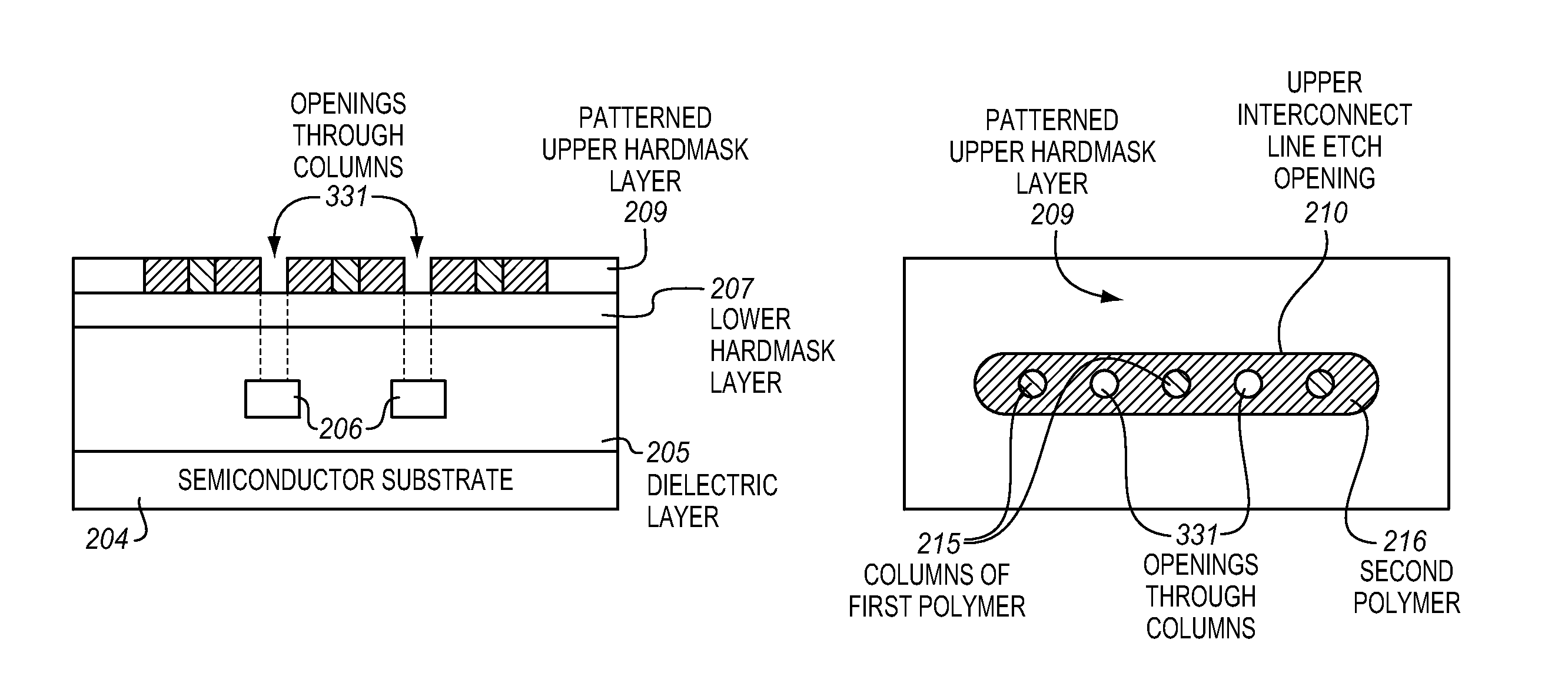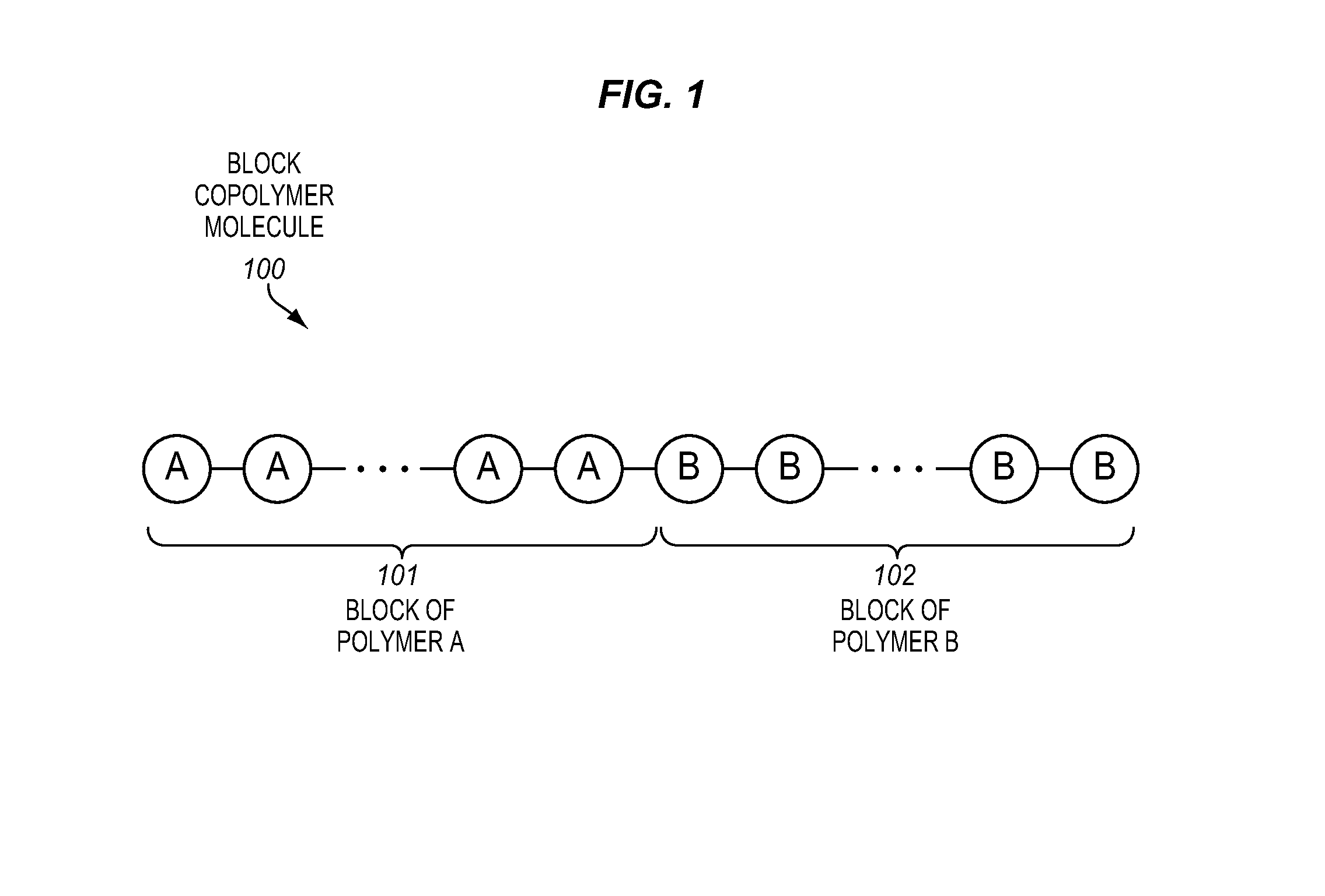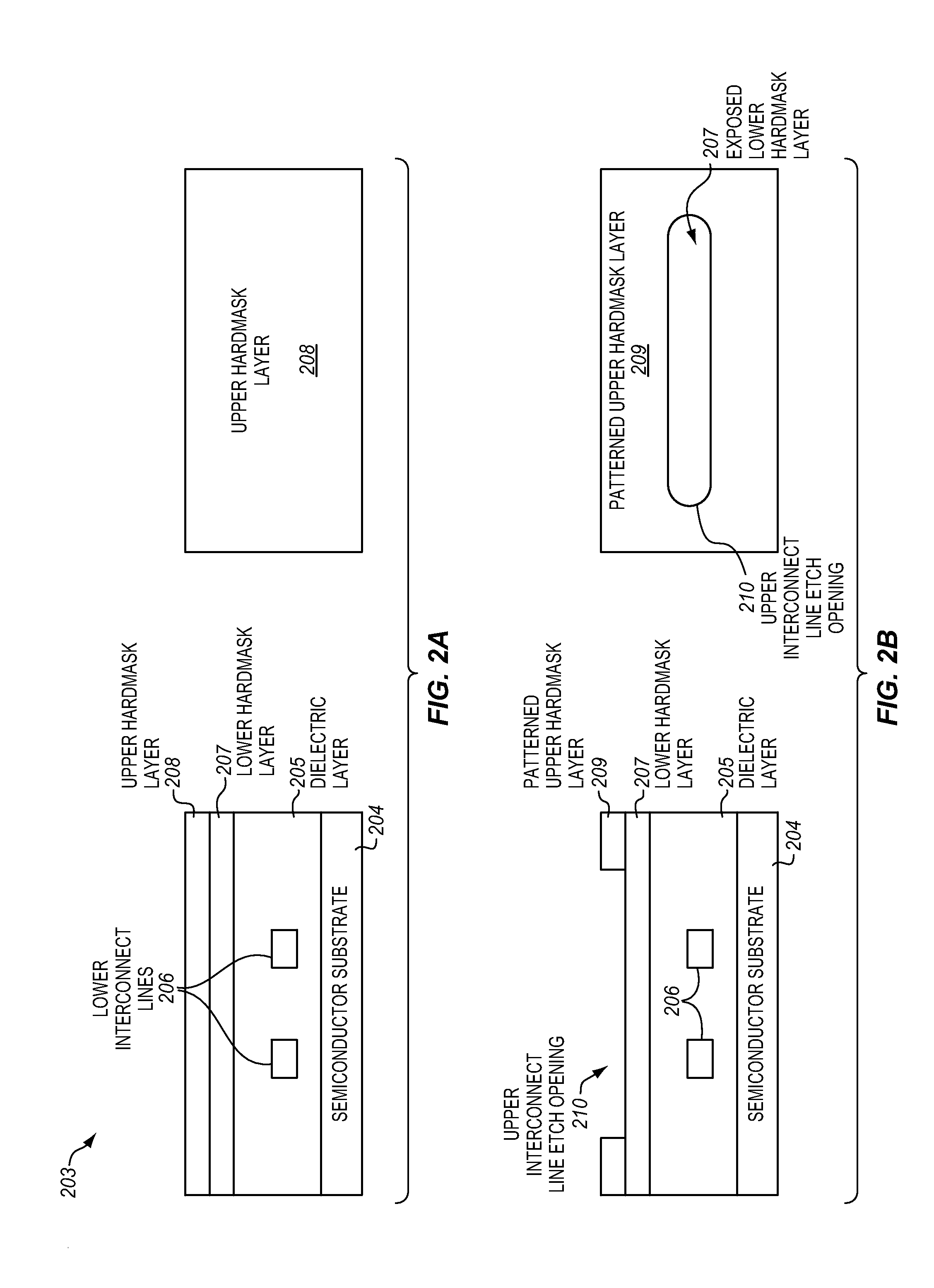Directed self assembly of block copolymers to form vias aligned with interconnects
a technology of photoresists and copolymers, which is applied in the direction of electrical equipment, semiconductor devices, semiconductor/solid-state device details, etc., can solve the problems of lwr and/or cdu characteristics of photoresists generally needing to improve, and the critical dimensions of the via opening generally tend to scale faster than the resolution capability,
- Summary
- Abstract
- Description
- Claims
- Application Information
AI Technical Summary
Benefits of technology
Problems solved by technology
Method used
Image
Examples
Embodiment Construction
[0016]In the following description, numerous specific details, such as specific types of block copolymers, specific interconnect structures, specific orders of operations, specific materials, and the like, are set forth. However, it is understood that embodiments of the invention may be practiced without these specific details. In other instances, well-known structures and techniques have not been shown in detail in order not to obscure the understanding of this description.
[0017]FIG. 1 illustrates a block copolymer molecule 100. The block copolymer molecule is a polymeric molecule formed of a chain of covalently bonded monomers. In a block copolymer, there are at least two different types of monomers, and these different types of monomers are primarily included within different blocks or contiguous sequences of monomers. The illustrated block copolymer molecule includes a block of polymer A 101 and a block of polymer B 102. The block of polymer A includes predominantly a chain of c...
PUM
 Login to View More
Login to View More Abstract
Description
Claims
Application Information
 Login to View More
Login to View More - R&D
- Intellectual Property
- Life Sciences
- Materials
- Tech Scout
- Unparalleled Data Quality
- Higher Quality Content
- 60% Fewer Hallucinations
Browse by: Latest US Patents, China's latest patents, Technical Efficacy Thesaurus, Application Domain, Technology Topic, Popular Technical Reports.
© 2025 PatSnap. All rights reserved.Legal|Privacy policy|Modern Slavery Act Transparency Statement|Sitemap|About US| Contact US: help@patsnap.com



